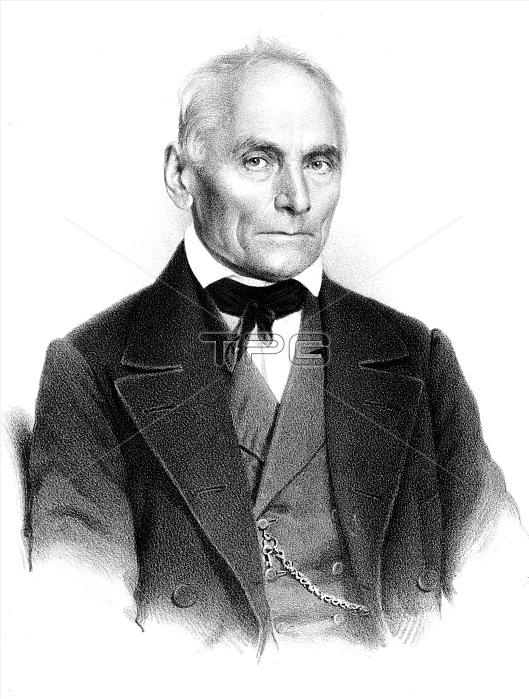
Johannes Evangelist Purkinje (December 17, 1787 - July 28, 1869) was a Czech anatomist and physiologist. He was one of the best known scientists of his time. He discovered the Purkinje effect whereby as light intensity decreases, red objects seems to fade faster than blue objects of the same brightness. He is best known for his 1837 discovery of Purkinje cells, large neurons with many branching dendrites found in the cerebellum. He is also known for his discovery, in 1839 of Purkinje fibers, the fibrous tissue that conducts electrical impulses from the atrioventricular node to all parts of the ventricles of the heart. Other discoveries include Purkinje images, reflections of objects from structures of the eye, and the Purkinje shift, the change in the brightness of red and blue colors as light intensity decreases gradually at dusk. Purkyne also introduced the scientific terms plasma (for the component of blood left when the suspended cells have been removed) and protoplasm (the substance found inside cells). He was the first to use a microtome to make wafer thin slices of tissue for microscopic examination and was among the first to use an improved version of the compound microscope. He described the effects of camphor, opium, belladonna and turpentine on humans in 1829. He discovered sweat glands in 1833 and published a thesis that recognized 9 principal configuration groups of fingerprints in 1823. He died in 1869 at the age of 81.
| px | px | dpi | = | cm | x | cm | = | MB |
Details
Creative#:
TOP22161729
Source:
達志影像
Authorization Type:
RM
Release Information:
須由TPG 完整授權
Model Release:
N/A
Property Release:
No
Right to Privacy:
No
Same folder images:

 Loading
Loading